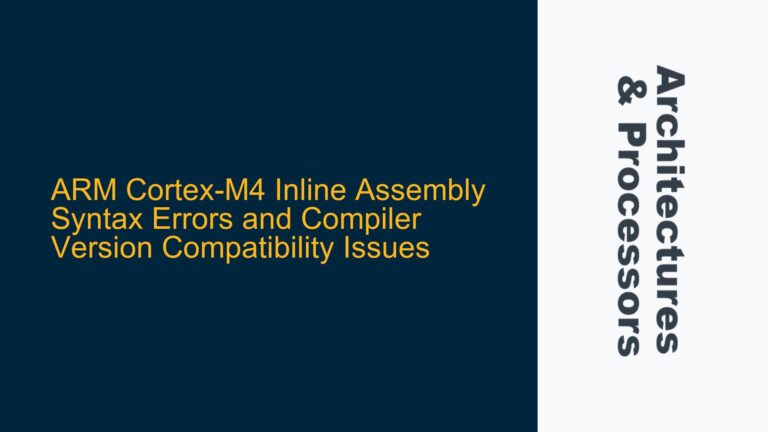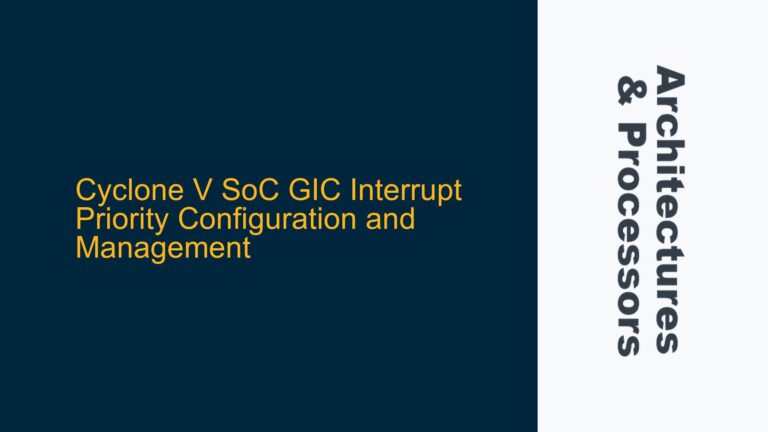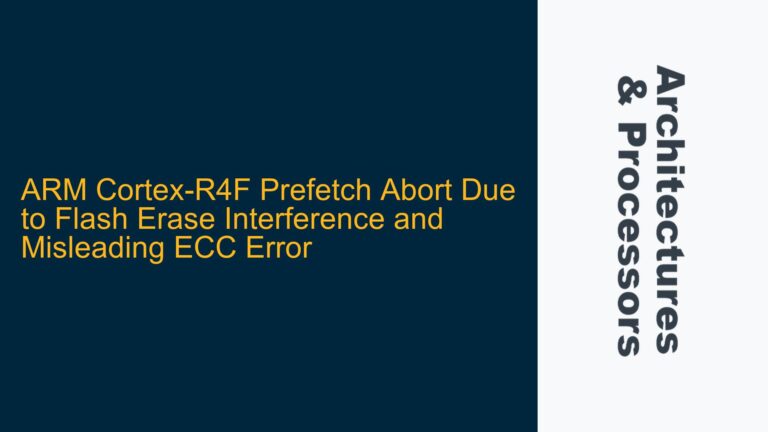ARM Cortex-M3 Power Consumption Differences: LDR Pseudo-Instruction vs. Manual Address Construction
Understanding the Power Consumption Discrepancy Between LDR Pseudo-Instruction and Manual Address Construction
When working with ARM Cortex-M3 processors, particularly in low-power embedded systems, understanding the nuances of instruction execution and their impact on power consumption is critical. In this case, the user observed differing power consumption traces when using two methods to load an address into a register: the LDR r4, =0x50013ffc pseudo-instruction and manually constructing the address using multiple Thumb-16 instructions. Both methods compile successfully, but the power consumption profiles differ significantly. This discrepancy arises due to the underlying differences in how these methods are executed by the processor, including instruction fetch, decoding, and execution cycles, as well as memory access patterns.
The LDR r4, =0x50013ffc pseudo-instruction is a high-level abstraction provided by the assembler, which translates into a PC-relative load instruction. This means the assembler stores the constant 0x50013ffc in a literal pool (a section of memory close to the code) and generates a load instruction to fetch this value from the literal pool into the register. On the other hand, manually constructing the address using multiple Thumb-16 instructions involves a sequence of operations, such as loading immediate values, shifting, and combining them to form the final address. These differences in execution paths lead to variations in power consumption.
Memory Access Patterns and Instruction Execution Cycles
The primary cause of the power consumption difference lies in the memory access patterns and the number of instruction execution cycles required for each method. The LDR r4, =0x50013ffc pseudo-instruction involves a single memory access to the literal pool, which is typically located within a small offset from the current program counter (PC). This results in a predictable and efficient memory access pattern, minimizing the number of cycles and reducing power consumption.
In contrast, manually constructing the address requires multiple instructions, each of which must be fetched, decoded, and executed. For example, constructing 0x50013ffc might involve loading smaller immediate values into registers, shifting them, and combining them using logical operations. Each of these steps incurs additional instruction fetch and execution cycles, leading to higher power consumption. Additionally, the memory access patterns for these instructions may be less predictable, causing further variations in power usage.
Another factor contributing to the power consumption difference is the alignment and placement of the literal pool. The assembler places the literal pool in a location that minimizes the distance from the load instruction, ensuring efficient access. However, when manually constructing the address, the instructions may not be as tightly optimized, leading to less efficient memory access patterns and higher power consumption.
Optimizing Power Consumption with Data Synchronization and Instruction Selection
To address the power consumption discrepancy, it is essential to analyze and optimize both the instruction selection and memory access patterns. One approach is to use the LDR r4, =0x50013ffc pseudo-instruction, as it is inherently optimized for efficient memory access and minimal instruction cycles. However, if manual address construction is necessary, the following steps can help minimize power consumption:
-
Minimize Instruction Count: Reduce the number of instructions required to construct the address by using the most efficient Thumb-16 instructions available. For example, use immediate values that can be loaded directly into registers without additional shifting or combining.
-
Optimize Memory Access Patterns: Ensure that the instructions used to construct the address are placed in a way that minimizes memory access latency. This can be achieved by grouping related instructions together and avoiding unnecessary jumps or branches.
-
Use Data Synchronization Barriers: If the address construction involves multiple memory accesses, consider using data synchronization barriers to ensure that the memory accesses are performed in the most efficient order. This can help reduce power consumption by minimizing the number of memory access cycles.
-
Profile and Analyze Power Consumption: Use power profiling tools to measure the power consumption of different instruction sequences and identify areas for optimization. This can provide valuable insights into the impact of specific instructions and memory access patterns on power usage.
By carefully analyzing the instruction execution and memory access patterns, it is possible to optimize the power consumption of ARM Cortex-M3 applications. Whether using the LDR r4, =0x50013ffc pseudo-instruction or manually constructing the address, understanding the underlying mechanisms and their impact on power consumption is key to achieving efficient and reliable system performance.






